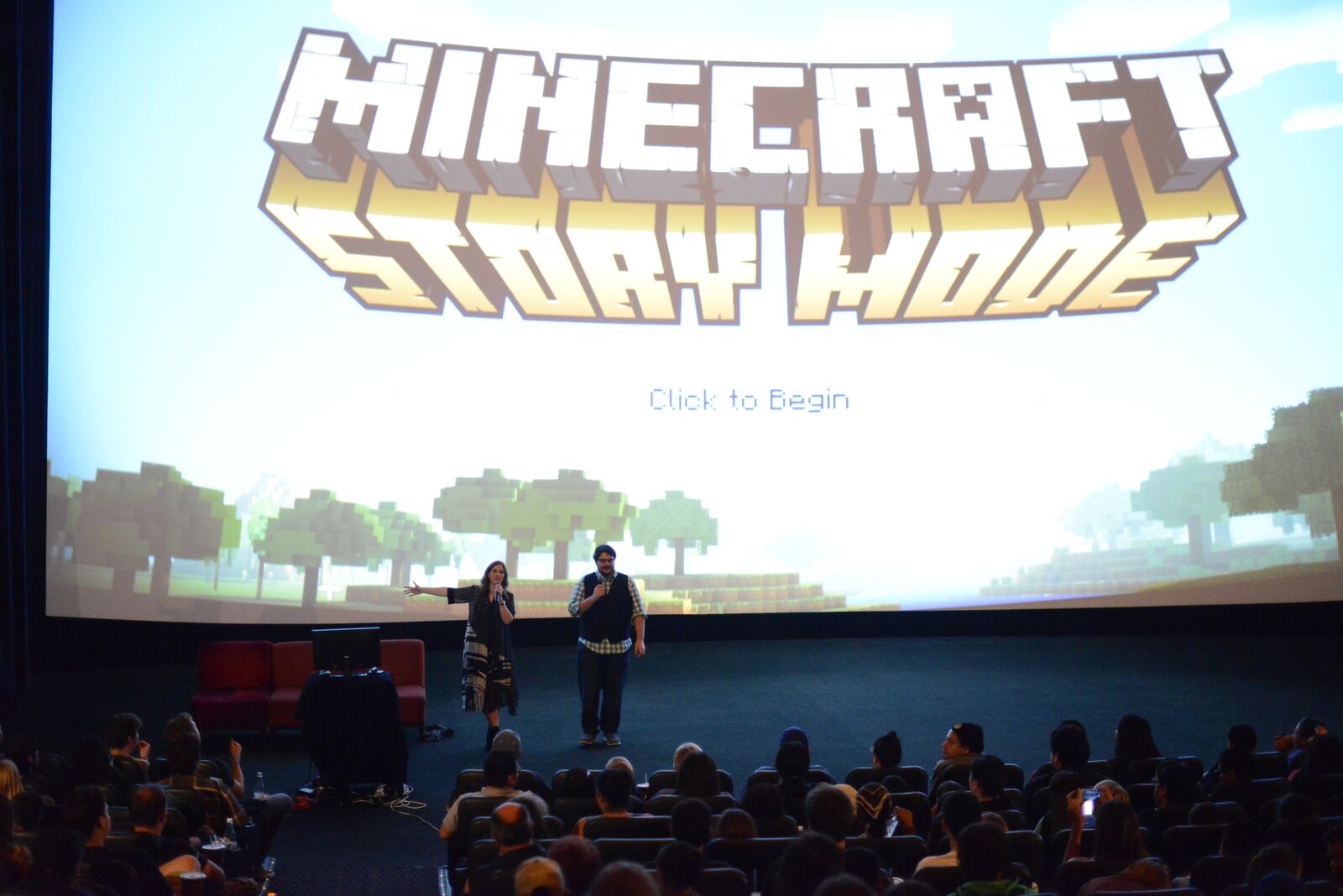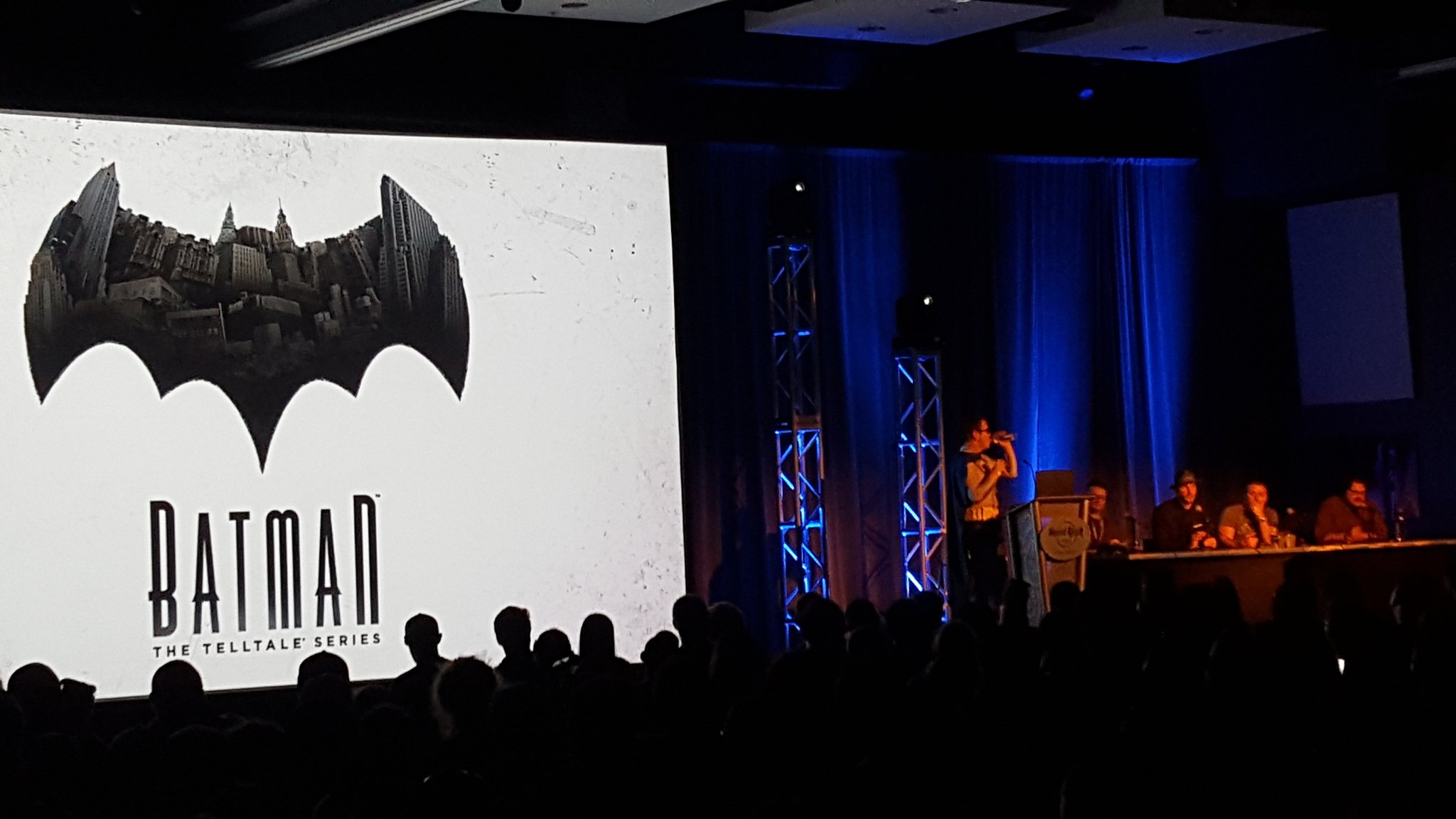Telltale Games has a long reputation for making high-quality episodic adventure games based on popular television shows such as The Walking Dead and Game of Thrones, but the company isn’t afraid to go beyond that. In 2013, it began a series called The Wolf Among Us, based on the award-winning Fables comic book. Telltale has even made games based on other games, including Tales from the Borderlands and Minecraft: Story Mode. Each series uses Telltale’s signature decision system, where the player’s choices shape events in subsequent episodes.
Given its history, it should be little surprise that Telltale was ready to launch a new series featuring one of the most iconic comic book characters in the world: Batman. The first episode Batman: The Telltale Series released earlier this week, and it gives players a chance to play to choose between being a brutal vigilante or a symbol of justice. Players must also balance between being The Dark Knight and his billionaire alter ego, Bruce Wayne.
Additionally, Telltale revealed a new feature called Crowd Play at the San Diego Comic-Con. With it, 2-24 players at home, or potentially thousands of people at events, can help make or take over game decisions by voting from mobile devices and web browsers. Although the feature is not yet ready for livestreaming due to the latency issues services like Twitch have, it has the potential to become an excellent live promotional tool by adding a social sense of multiplayer to these otherwise single-player adventure games. Telltale will include Crowd Play in all of its games going forward, including with the third season of The Walking Dead.
Job J. Stauffer, head of creative communications at Telltale Games, talks to [a]listdaily about releasing an all-new Batman game (especially in the wake of the acclaimed Arkham series) and why fans everywhere are in love with adventure games.

What do you think makes Batman such an enduring character, and what are some of the unique challenges with working with such a well-known character?
Batman has been a pop-culture icon for over 75 years. With so many different iterations of the character across so many mediums: comics, film, television, games and more—there’s definitely been a constant reinvention in place. When different writers, directors, artists and storytellers are fortunate enough to take the reins and tell their own Batman stories, we often see familiar Batman themes, but always very different shades of those themes interpreted by each different artists’ take on the icon. From the darker, grittier vision of the character from writers like Frank Miller, to the more all-ages portrayal we’ve seen in projects like Batman: The Animated Series—there are just so many different versions of the character, and fans all seem to have their favorite iterations. Working with DC and Warner Bros., we’ve been thrilled to be able to create our own entirely original take on the universe as well, and that really gives us the creative space to make the project work as a Telltale game.
For us, allowing the player to role play as Bruce, giving them the chance to lean into a behavior that might reflect several different shades of the character they prefer, that’s key to this series. It’s about role-playing. It’s about giving the player the opportunity to think about the kind of Batman they want to be. Are they the type to find a wounded suspect in a warehouse and immediately beat them in the face them for answers? Or are they the Batman who will instead take a less violent approach, intimidating criminals psychologically to get the answers they need. The space for reinvention has really been at the heart of the character’s endurance over the years, and the chance to be the Batman the player wants to be is at the heart of our series.
Do you think movies such as Batman v Superman: Dawn of Justice or Suicide Squad help bring attention to Batman games?
We’re huge fans ourselves, and as an enduring pop-culture icon, we’re always thrilled to see the character and the universe on the big screen. We aren’t based on the current theatrical portrayals—or any others, for that matter—but certainly, when fans are excited in the theatrical space, there’s excitement in the interactive space and vice versa. While the groundswell of enthusiasm coming from all different angles is good for both sides of the business, the real winners here are the fans, and there’s no shortage of incredible content to consume on every screen.
Some would argue that the real stars of any Batman story are the villains, but it seems like Telltale has been slow to reveal them. What is the reasoning behind this?
Before premiering this week, you’d be correct in pointing out that we had yet to really see a lot of whom players may be facing off against in this series. We had seen characters like Harvey Dent, Selina Kyle, Carmine Falcone, and a very brief glimpse of Oswald Cobblepot in our launch trailer. Characters like Harvey and Oswald are perhaps better known by other names, Two-Face and Penguin respectively, but as this is a series, there’s still much to be discovered on if they’ll even move in that direction in the story. As a five-episode series, there’s space for character evolution into those roles, but there’s also an opportunity for players to potentially shape their paths to becoming their more villainous selves down the line—assuming they do at all.
Beyond that, there are still so many secrets we have around the corner that we wouldn’t dare spoil ahead of time. What we can say is that the door is open for more familiar names to show up, though they may not always be familiar faces. This is an interpretation that’s much more grounded in reality than fantasy, and we expect that players will see the more human side of our villains before they may see them taking to any extremes. A big part of the mystery of this story surrounds Bruce’s commitment to taking down Gotham’s most untouchable criminals, but it may also question everything he’s ever known about himself and the criminals at large.
Is there a different approach to promoting a Batman adventure game compared to The Walking Dead, Game of Thrones or Minecraft: Story Mode?
Diversifying our lineup of projects and creating for all different age groups across multiple story genres has definitely given us a wide variety of audiences to engage. That said, the approach is always the same message: We want to give fans the chance to role-play in the worlds that they love the most, with a rich story that’s completely tailored to them by the decisions they make in the shoes of complex and interesting characters. In the case of The Walking Dead, that message is conveyed to a mature audience, and for Minecraft: Story Mode, it’s the same message for all ages and families. These are worlds that we love ourselves, and when we open the door each time with a new series like Batman, we find that we’re also growing a core audience of new Telltale fans at the same time.

Players have seen Batman portrayed as an action game for years. Quite frankly, we’ve had some of the best action games ever made with the Arkham series, but we’re not an action game, we’re an interactive story that’s also full of action. For many Batman fans who’ve yet to experience a Telltale series, it’s a whole new way to play in the world that they love, and the door remains open for them to try hopping into another universe and experiencing an entirely different story genre with familiar mechanics. Games are, and always have been, defined into genres by their mechanics: shooters, racing games, puzzle, fighting etc. With film, television, comics and literature, story defines the genre. At Telltale, we see it the same way. The easiest definition of our games mechanically might be “adventure,” but in truth, our genres range from apocalyptic drama (The Walking Dead), to epic fantasy (Game of Thrones), neon-noir thriller (The Wolf Among Us), to sci-fi action/comedy (Tales from the Borderlands) and beyond.
In this way, as we continue to blur the line between games and interactive narrative. We see more of an approach that’s similar to a TV network, creating a destination for quality storytelling across a limitless variety of genres that’s available on every device. Console, PC/Mac, mobile, tablet and set-top boxes like Apple TV and Amazon Fire TV—the same places people can consume services like Netflix and HBO, we’re also able to reach the Batman audience with very little platform restriction for an experience that’s the same on every device.
Telltale recently revealed the Crowd Play feature, which will be included in Batman and all future Telltale Games. How have you seen social interaction impact Telltale Games’ experiences in the past?
The adventure genre was, for many years, a functionally single-player experience. Loving it so much, we all grew up playing with friends and family for fun, huddled around the same tiny computer screens, pointing and clicking together by deciding what to say and do as a group. By 2012 with The Walking Dead, we were delighted to hear from so many fans who discovered they liked to play our games at home with friends and family, watching the same screen and debating on decisions with the lead player. We even did this ourselves as a studio, playing with the cast and crew at launch parties and enjoying the social experience.

By 2014, we took things to a grand scale, premiering Tales from the Borderlands at the Alamo Drafthouse in Texas, not far from the home office of our partners at Gearbox. With some food and drinks in hand, the audience shouted, applauded, and debated decisions on the big screen while the game’s director was at the controls. The experience was unforgettable, and not the last time we’d do it. We hit the road and continued with more episode premieres at places like PAX in Seattle, with fans crying in the audience as they witnessed the story on screen.
'CATCH A RIIIDE!!' A closer look @ the electric & emotional 'Tales from the @Borderlands' LIVE CROWD PLAY @ #PAXPrime pic.twitter.com/N4cYHPCKKS
— Telltale Games (@telltalegames) September 1, 2015
In 2015, we premiered Minecraft: Story Mode at the legendary Cinerama Dome in Hollywood with a full red carpet procession of cast and YouTube stars in the audience for the ‘World’s Largest Let’s Play,’ as families, parents and kids cheered on the action. The experience was even streamed live on YouTube Gaming during its inaugural kick-off phase, and the series remains a huge hit on YouTube even as recently as this past June during E3 as the number one game on the network.
That passion and that energy that happens when people experience Telltale’s games together, that’s something we want to encourage as an option. Our stories can be deeply personal, but enabling players with the ability to share such a personal experience with friends and family is something we knew would work.

So beyond just sitting together and passionately shouting at a screen, we’ve just kicked off the new Crowd Play feature with Batman. We unveiled it after another session last month at San Diego Comic-Con where we played with host Greg Miller in front of hundreds of fans.
The feature allows for local groups of 2-to-24 or more to play at home by having their friends vote on story decisions and give feedback from their mobile devices using any web browser connected online as they follow the lead player on the main screen. We’re already seeing fans playing Batman together with friends and family, and we’re gearing up to take our games on tour for special events and engagements worldwide where we plan to service a live audience of 1,000 players or more. Formally taking Telltale’s stories into the multiplayer space is definitely exciting, but this is just the tip of the iceberg. Right now, this is a local and social experience, and we love that. The live experience of playing with a huge audience in the same room is unforgettable. Beyond that, we are also working with networking partners to find solutions for making this viable to play across streaming services. Right now, the latency on streaming services means we’d have to slow down the drama and tension for remote viewing audiences to catch up on decisions, and we certainly don’t want to break the Telltale experience that way. But in the future, we expect to find solutions with our partners that would open the door for viewing audiences to play along live with their favorite streamers.
Has it been a challenge staying with the episodic format? Why do you think it continues to work for Telltale?
We think it’s a challenge each and every day we come into the studio and work our hardest to make it happen. Being up for that challenge—that’s just who we are. It continues to work for Telltale because it’s been in our DNA since the beginning in 2004, and we’ve don’t see ourselves stopping anytime soon. Audience participation in the development process is key here, and as we push forward episode-to-episode in live development, having an ear to the ground on what fans are thinking keeps us on our toes, and keeps our stories unpredictable.
What do you think of the growth of comic book characters across TV and movies?
We think there’s never been a better time to be a fan. This year in particular, working with DC/WB on Batman as well as with our partners at Skybound on our third season of The Walking Dead, there can be no denying that comics are at the backbone of popular arts and entertainment. We all grew up playing games, reading comics, and geeking out watching them come to life on screens big and small. For Telltale, being at the crossroads of all of those mediums, telling interactive stories based on comics played on game systems, tablets, TVs and even on the big screen at special events with huge audiences controlling the story—this is definitely our golden era, and we couldn’t be happier to be a part of it.

